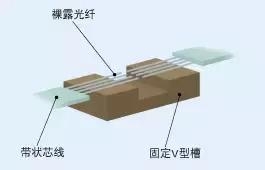Types and principles of fiber fusion
Fiber optic wiring technology can be divided into fusion, mechanical splicing, and connector wiring. Fusion and mechanical splicing are permanent wirings, and connector wiring can be repeatedly removed. Optical connector wiring is mainly used for wiring points that must be switched during the operation and maintenance of optical services. Permanent wiring is mainly used in other places.
Fusion is a wiring technique that uses the heat generated by the discharge between the electrodes to melt the fiber. The fusion method is divided into the following two categories.
(1) Optical fiber core alignment method
This is a method in which the core of the optical fiber is observed under a microscope, and the center axis of the core wire is aligned by image processing, and then the discharge is performed. Positioning is performed in two directions using a fusion machine configured with a two-way viewing camera.

(2) Fixed V-groove alignment method
This is a method of aligning the outer diameter and aligning the core by arranging the optical fiber with a high-precision V-groove and utilizing the effect of the surface tension generated by melting the optical fiber. Recently, due to the development of manufacturing technology, the dimensional accuracy of the position of the optical fiber core and the like is improved, so that low-loss wiring can be realized. This method is mainly used for multi-core one-time wiring.

Disclaimer: All information indicated as other sources is transferred from other platforms, the purpose is to convey more information, does not represent the views and positions of this site. Please contact us if there is any infringement or objection.